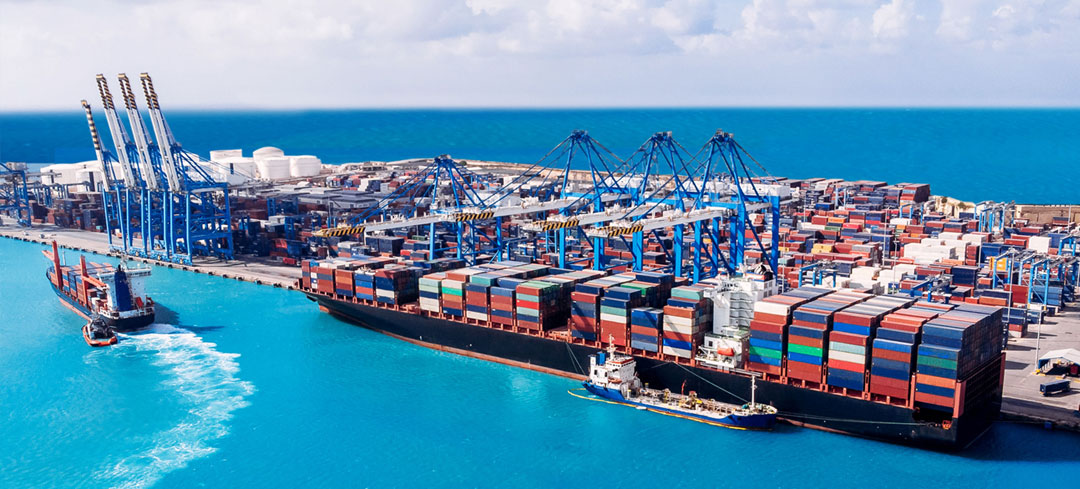Container ports are crucial hubs in the global supply chain, facilitating the movement of goods between countries and continents. As these ports continue to expand and modernise, the environmental impact of their operations has become a significant concern. Connectivity plays a vital role in addressing these environmental challenges, enabling ports to adopt sustainable practices and reduce their carbon footprint. This article explores the importance of connectivity in enhancing environmental considerations for container ports.
Enhancing Environmental Performance through Connectivity
Connectivity is essential for integrating advanced technologies and systems that help ports monitor and manage their environmental impact. By enabling real-time data exchange and seamless communication between different stakeholders, connectivity fosters a more sustainable and efficient port operation.
Real-time Environmental Monitoring
One of the primary benefits of connectivity is the ability to monitor environmental conditions in real time. Sensors and IoT devices installed throughout the port can track air and water quality, noise levels, and energy consumption. This data is crucial for identifying pollution sources and implementing mitigation measures promptly. Real-time monitoring ensures that ports can respond quickly to any environmental issues, minimising their impact.
Energy Management Systems
Energy management is a critical component of reducing the environmental footprint of container ports. Connected energy management systems allow ports to optimise their energy usage by integrating renewable energy sources such as solar and wind power. These systems can also monitor and control energy consumption in real time, ensuring that energy is used efficiently and reducing reliance on fossil fuels. Connectivity enables the coordination of these systems, leading to more sustainable port operations.
Shore Power Systems
Shore power, also known as cold ironing, is a technology that allows ships to plug into the local power grid while docked, eliminating the need to run their engines. This significantly reduces emissions of greenhouse gases and other pollutants. Connectivity is crucial for the successful implementation of shore power systems, as it ensures seamless integration with the port’s electrical infrastructure and real-time monitoring of power usage.
Technological Innovations Driven by Connectivity
Connectivity facilitates the adoption of various technological innovations that enhance the environmental sustainability of container ports. These innovations help ports manage resources more efficiently, reduce emissions, and comply with environmental regulations.
Automated and Electric Vehicles
The use of automated and electric vehicles (EVs) within ports can significantly reduce emissions and improve air quality. Automated guided vehicles (AGVs) and electric cranes, which are connected to central control systems, enable precise and efficient cargo handling. Connectivity ensures the smooth operation of these vehicles, optimising their routes and reducing energy consumption. EVs contribute to a cleaner and quieter port environment, supporting overall sustainability goals.
Smart Logistics and Supply Chain Management
Connectivity enables smart logistics and supply chain management, which are crucial for reducing the environmental impact of port operations. By leveraging data analytics and AI, ports can optimise cargo handling, storage, and transportation. This leads to more efficient use of resources and reduced emissions. For example, optimised routing of trucks and trains minimises fuel consumption and decreases the carbon footprint of cargo transportation.
Emission Control and Compliance
Compliance with environmental regulations is a significant concern for container ports. Connectivity facilitates the implementation of emission control technologies, such as scrubbers and catalytic converters, which reduce pollutants from ships and port equipment. Real-time data sharing ensures that ports can monitor emissions and demonstrate compliance with regulatory requirements. This transparency is vital for maintaining good relationships with regulatory authorities and the local community.
Sustainable Development through Connectivity
Connectivity supports the sustainable development of container ports by enabling the adoption of green technologies and practices. It ensures that ports can balance economic growth with environmental responsibility, contributing to long-term sustainability.
Integration of Renewable Energy
The integration of renewable energy sources is essential for reducing the carbon footprint of container ports. Connectivity enables the seamless incorporation of solar panels, wind turbines, and other renewable energy installations into the port’s energy grid. This not only reduces greenhouse gas emissions but also enhances the port’s energy security and resilience.
Water and Waste Management
Effective water and waste management are critical for the environmental sustainability of container ports. Connectivity allows for the monitoring and optimisation of water usage, ensuring that resources are used efficiently and waste is minimised. Advanced waste management systems can track and process waste materials, promoting recycling and reducing landfill usage. This contributes to a cleaner and more sustainable port environment.
Stakeholder Collaboration
Sustainable port operations require collaboration among various stakeholders, including port authorities, shipping lines, logistics providers, and local communities. Connectivity facilitates this collaboration by providing platforms for data sharing and communication. Engaging stakeholders in sustainability initiatives ensures that environmental goals are aligned and collectively pursued.
Conclusion
Connectivity is a cornerstone of environmental sustainability for container ports. By enabling real-time monitoring, efficient energy management, and the adoption of green technologies, connectivity helps ports reduce their environmental impact and comply with regulations. As global trade continues to grow, the importance of robust connectivity in supporting sustainable port operations cannot be overstated. By embracing connectivity, container ports can achieve a balance between economic growth and environmental responsibility, ensuring a sustainable future for global trade.
#ContainerPorts #PortConnectivity #SustainablePorts #GreenTechnology #SmartPorts #IoT #RenewableEnergy #EmissionControl #EnergyManagement #EnvironmentalSustainability
